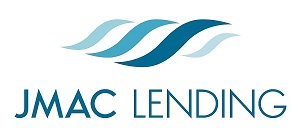Q1: What fees are moving from the 10% tolerance category to zero tolerance?
A1: Zero tolerance now also includes fees paid to an unaffiliated third party if the borrower was not permitted to shop for the service provider (e.g. Appraisal, Credit Report, and Flood Cert) and fees paid to an affiliate of the lender or mortgage broker.
Q2: Will we still be able to have a valid changed circumstance to increase the appraisal fee?
A2: The appraisal fee itself can still increase with a valid changed circumstance. For example, the appraisal was ordered for a single family residence per information provided by the borrower, however when the appraiser visited the property, it’s actually a condominium and thus a different schedule of appraisal fees applies. This is a valid changed circumstance.
Q3: What if a field review or final inspection is needed after the underwriter reviews the appraisal report?
A3: It is still a valid changed circumstance if information specific to the borrower or transaction that the lender relied on when providing the LE was inaccurate or changed after the LE was provided. In the case where the need for a field review or final inspection was only discovered after the underwriter reviews the initial appraisal that would be a valid changed circumstance.
Q4: When are credit supplements considered a valid changed circumstance in order to incase the credit report fee?
A4: There are two ways to look at credit supplements in regards to if it’s a valid changed circumstance:
1. If we received new information since delivery of the LE that would affect the borrower’s credit score so a credit supplement was ordered to verify the new information, this would be a valid changed circumstance. Examples include: validating new debt discovered during the undisclosed debt monitoring process and evidencing debt was paid in full and closed by the borrower in order to lower the DTI for credit approval.
2. If the credit supplement was ordered only to clarify information on the credit report, this may not be a valid changed circumstance since other documentation could be obtained to confirm this information.
Q5: When is the LE re-disclosed for the fee changes in the 10% tolerance category?
A5: If there is a valid changed circumstance affecting the 10% tolerance category, the LE is only re-disclosed if the total fees in that category increase over the 10% threshold.
For example, the title agent discovers a lien on title that needs to be cleared and adds a $100 fee to clear it. If the borrower and lender were unaware of this lien in order to accurately disclose the title fees upfront, then this new information can be considered a valid changed circumstance, however you will only re-disclose the LE if this fee caused the total category to increase over the 10% threshold. If the total fees in the 10% category were $800, so the total has now increased to $900, that is a 12.5% increase and the LE can be re-disclosed showing the new title clearance fee. On the other hand, if the title clearance fee was only $50 that is a 6.25% increase and the LE would not be re-disclosed. The LE cannot reflect increased fees until it’s surpassed the 10% threshold.

